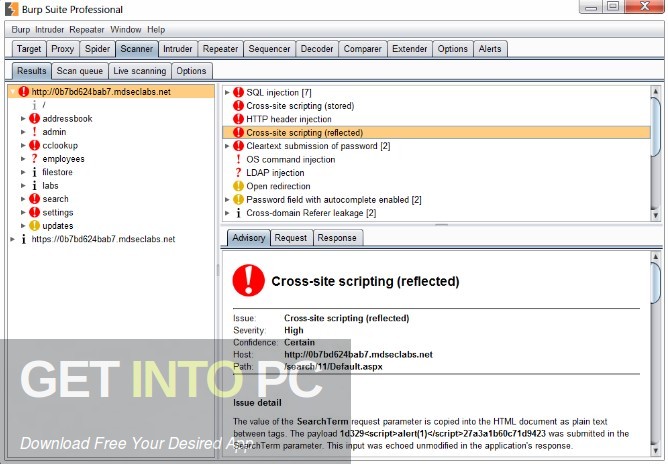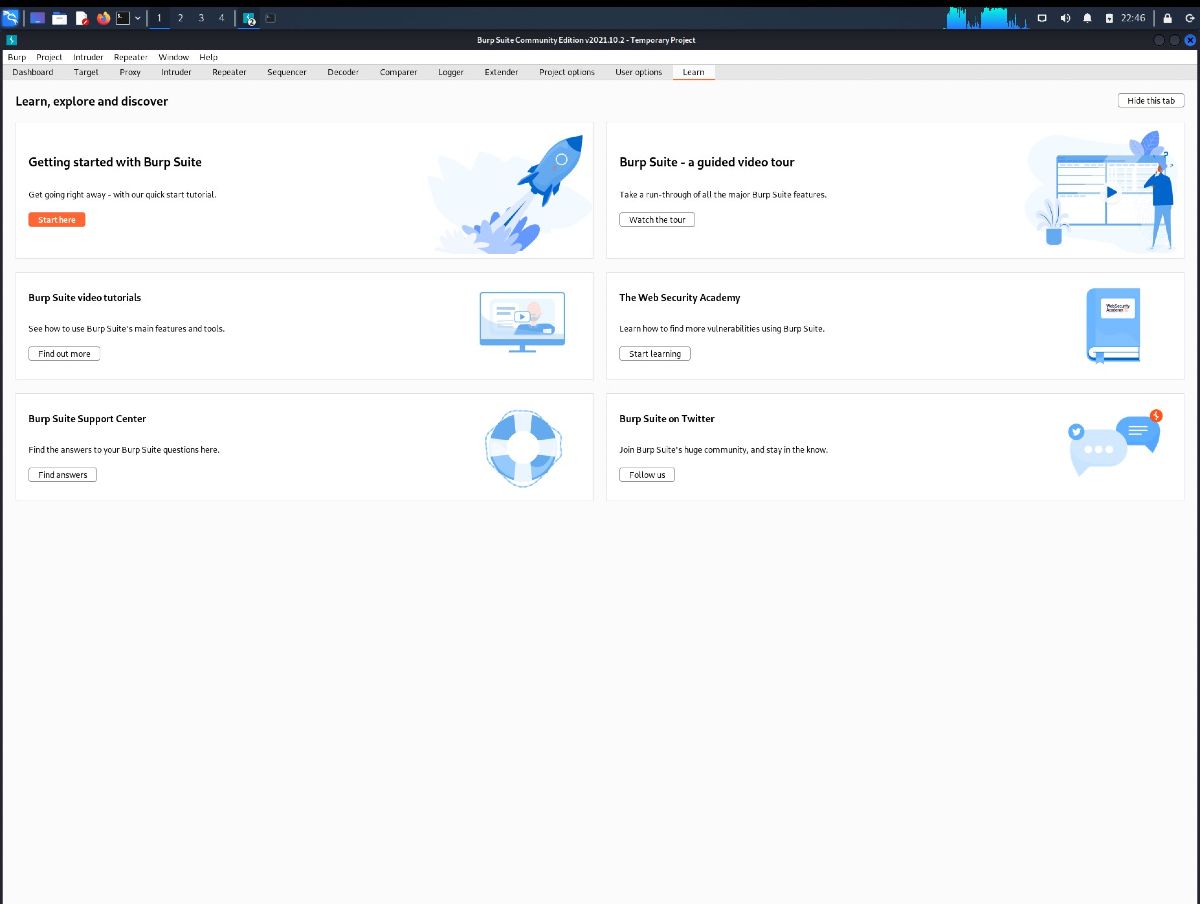
- #Burp suite manual testing how to#
- #Burp suite manual testing pdf#
- #Burp suite manual testing update#
For example, in the Admin user row, we’ll need to check the “Admin” role box, and the “Authenticated” role box. Next, we’ll assign our users to roles by checking the relevant boxes. Once we have our roles in place, we can add users using the “New User” button. For reasons that will become clear, instead of an “Unauthenticated” role, we’re going to create an “Authenticated” role and assign it to all our users except the Unauthenticated one. First we’ll set up the roles by clicking the “New Role” button at the bottom of the screen. Setting this up in AuthMatrix is relatively simple. Other than that, the access rules should make sense. The only page everyone should access is the index page, which is required so that users can log in there. The breakdown of intended access to these pages per role is as follows: However, there is another role that is implicit: the unauthenticated user. In this demo application, there are three roles: Admin, Manager, and User. The top section is where we will define our users, the section below that will be where we send the requests we wish to test, and the other sections we won’t worry about for now.įirst let’s set up the roles. Installing AuthMatrix & Getting StartedĪuthMatrix can be installed from the BApp store in Burp Suite, and when first loaded, it looks like the image below. In this post, we will cover basic setup of roles, users, and requests for a simple application that only uses cookies.
#Burp suite manual testing how to#
I think most people who avoid AuthMatrix do so because the learning curve can be steep, however in this series of blogs, we will teach you how to use AuthMatrix for various scenarios. It gained that respect from the sheer number of hours I know it’s saved me, combined with the number of authorization issues it has found.


Both these types need to be tested, which is where AuthMatrix comes in.ĪuthMatrix is, quite literally, my favorite Burp extension.
#Burp suite manual testing update#
For example, if users can update each other’s emails in an application by changing a userId field in a URL, that would be an authorization issue as well. This occurs when users of the same role can access resources that belong to the other user. However, there is another type of authorization issue: Insecure Direct Object Reference (IDOR). This example is generally known as privilege escalation. The user role is not “authorized” to access the admin functionality, but can anyway, because the application doesn’t perform the necessary checks. If, however, a regular user role can also access that functionality, by simply visiting the same URL, then you have an authorization issue. If an application has an admin role, then that admin role will likely be able to access some special admin functionality. What Is Authorization Testing?įirstly, let’s briefly cover what “authorization testing” is. I’m here today to tell you that you’re doing it wrong and that you should be using AuthMatrix instead. Perhaps you do everything manually, swapping out cookies for each request, or maybe you use the Burp extension, Autorize, to help automate some of the process. If you do want additional paper resources to hand, we would recommend The Web Application Hacker's Handbook by Dafydd Stuttard, the creator of Burp Suite or Burp Suite Essentials by Akash Mahajan.If you’ve ever encountered a large web application with multiple roles, each with their own distinct permissions, you will understand the pain that comes with testing for authorization issues. Please let us know if you need any further assistance.
#Burp suite manual testing pdf#
Īlternatively you could save and print our pages in PDF format.

We do not publish a physical version of our support documentation as it would quickly become dated.Īlso, our support pages are interactive and we recommend viewing them online to enable you to use the links to various pages.Ĭheck out our support center – – which has step-by-step tutorials with screenshots, and our official Burp documentation –.


 0 kommentar(er)
0 kommentar(er)
